Well repair on the water itself
Depending on the type of wells, the requirements for their operation also differ. Shallow wells have a smaller debit, they require constant work without long downtime of several days. Artesian wells are less demanding in the operation process than wells drilled to the first aquifer. Since the work of wells is associated with the use of narrow production and casing pipes, the silting process takes place over time, and the productivity of the well drops to the full stop of its operation. For the long-term functioning of the drilled water supply source, technical work is carried out to repair or restore the well. Work on the restoration and repair of artesian wells should be carried out by specialists with special equipment. If the water source is at a shallow depth, you can repair the well on the water with your own hands.
Looking for the cause
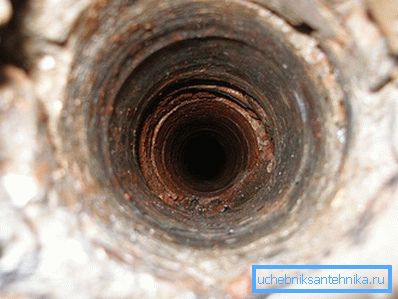
The determination of the tactics of a well repair process depends on the reasons for its failure or deterioration of work.
- Drilling performed without compliance with the technology.
- There was a silting up of the well.
- Installation of pumping equipment made in violation of technology.
- Wear pipe.
- Non-compliance with the maintenance schedule.
- Change in aquifer.
- Breakage of the cable holding the pump.
Signs of the need for repairs are a noticeable decrease in the debit of the well, the presence of impurities in the water. The most frequent possible cause of these symptoms is the silting of the well.
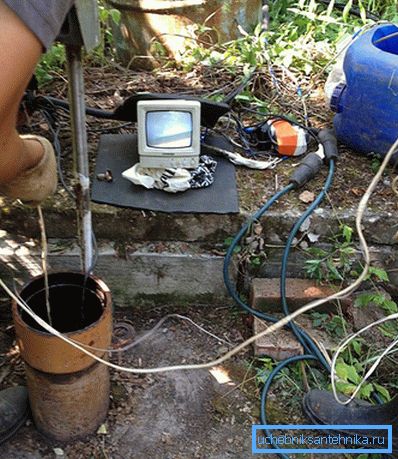
Certain types of repair work should be trusted to specialists who have the necessary equipment. But such work as well cleaning, pump replacement can be done independently. Diagnosing the cause of a temporary or complete failure of a well will help to avoid unnecessary actions and costs.
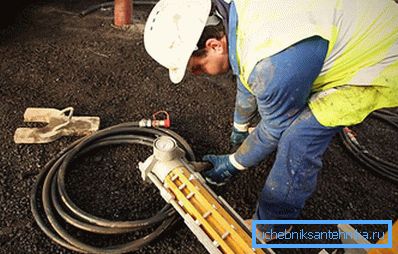
To begin with, it is necessary to exclude technical failures of the pump, automatic control unit, water distribution equipment. If the inspection of pipeline joints revealed no signs of leakage, then the presence of curvature of the casing under the action of the soil is checked. The presence of impurities in the water, reducing the debit of the well indicates a filter failure or silting of the well. Periodic cleansing is needed to eliminate this cause.

If a pump is stuck in the silting process, it must be swung. This should be done carefully, pulling the cable and loosening it so that it does not break. As a result of these manipulations, the pump will be gradually released from the sludge.
If the cable breaks, then devices specifically designed to pull the pump will be required.
Well cleaning after silting
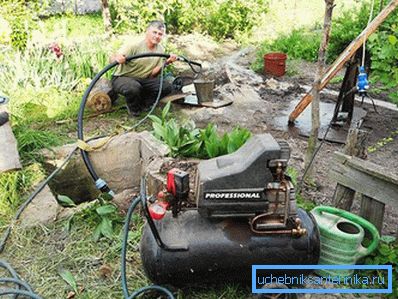
Restoration of a silted well can be done in the following ways:
- High-pressure air blowing with special equipment called airlift. The process consists in supplying air to the silted part of the well under pressure up to 10–15 atmospheres. This pressure is sufficient to push water with sludge onto the surface from the silted part.
- Flushing wells with water pressure. The process consists in supplying water under pressure through a hose to the silted part of the well, where the sludge is eroded under the stream of water. Water with a diffuse sludge rises to the surface through the production pipe. It should be noted that this method can lead to failure of the filtering element of the operating pump under the action of strong pressure from a jet of water, as well as clogging of the filtering element. To flush the silted area requires a large amount of water, which later with pollutants will be on the surface near the well. It is better to discharge dirty water to a special designated place or container for further disposal.
- In case of incomplete silting, the well can be pumped by a drainage pump. This type of pump is capable of pumping water with contaminating particles. This method is the safest for the well and its standard equipment, but it is useless with full silting. The method requires the disposal of contaminated water in the sewer or a special tank for further disposal.
- Mechanical cleaning of the well with zhelonka. The most safe and effective way to eliminate silting only after removing the pump from the well. The shell is a pipe up to 3 meters long, with a diameter slightly less than the diameter of the production pipe. A strong cable is tied to the end of the pipe, and a check valve is fitted at the other end. The shell is thrown inside the well, and under the force of gravity and acceleration enters the sludge. A check valve prevents sludge from falling out of the pipe when it is lifted to the surface. The end of the pipe may have sharp wedge-shaped protrusions for loosening compacted sludge. After cleaning the well, it is pumped through a drainage or conventional submersible pump.
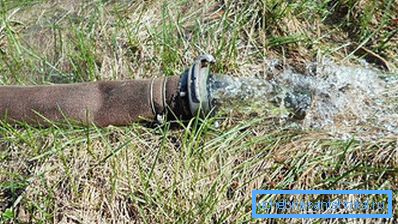
The safest and easiest way to pump a well independently is to use a sponge and a drainage pump.
If, after eliminating silting, the debit of the well has not recovered, it is necessary to check the filter of the well for the presence of corrosive and other deposits.
Video
Is the pump stuck in the water well? Watch the video, which describes the main causes of the problem: